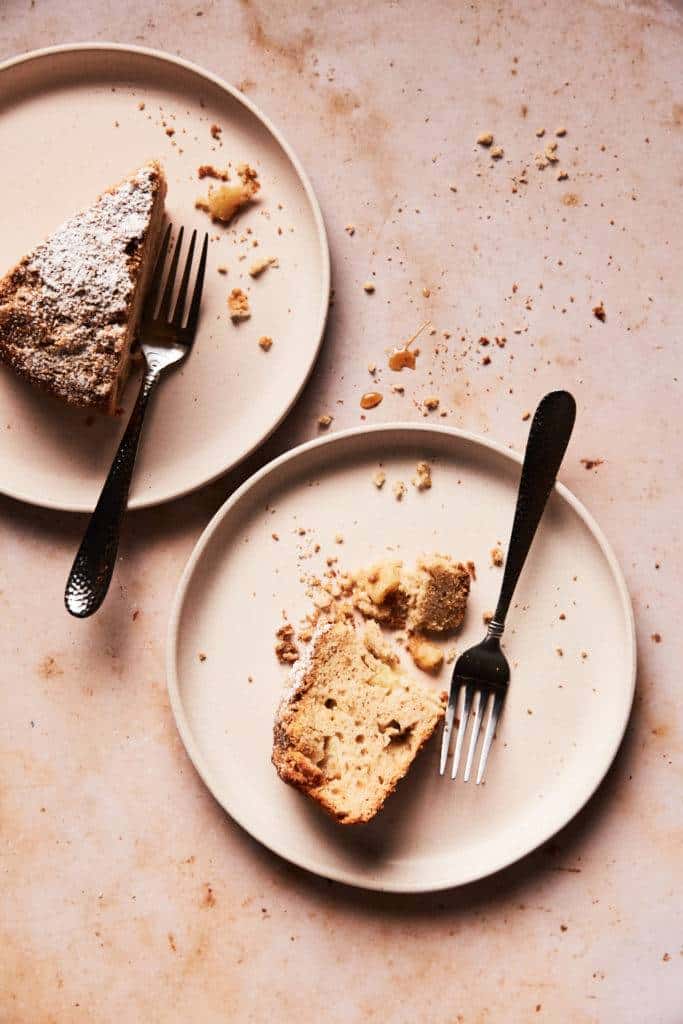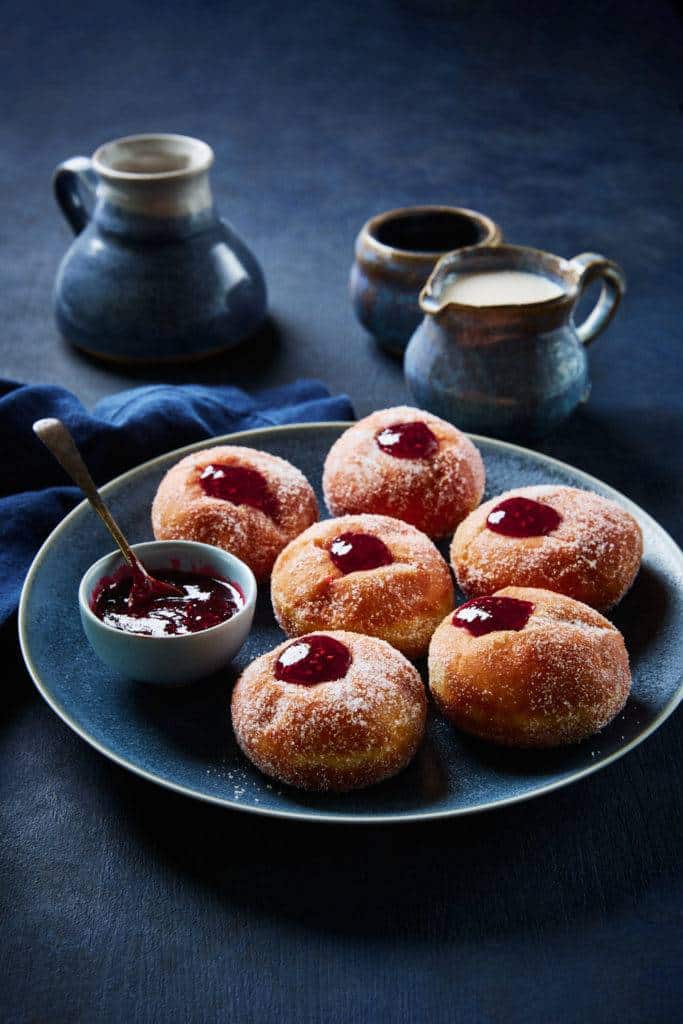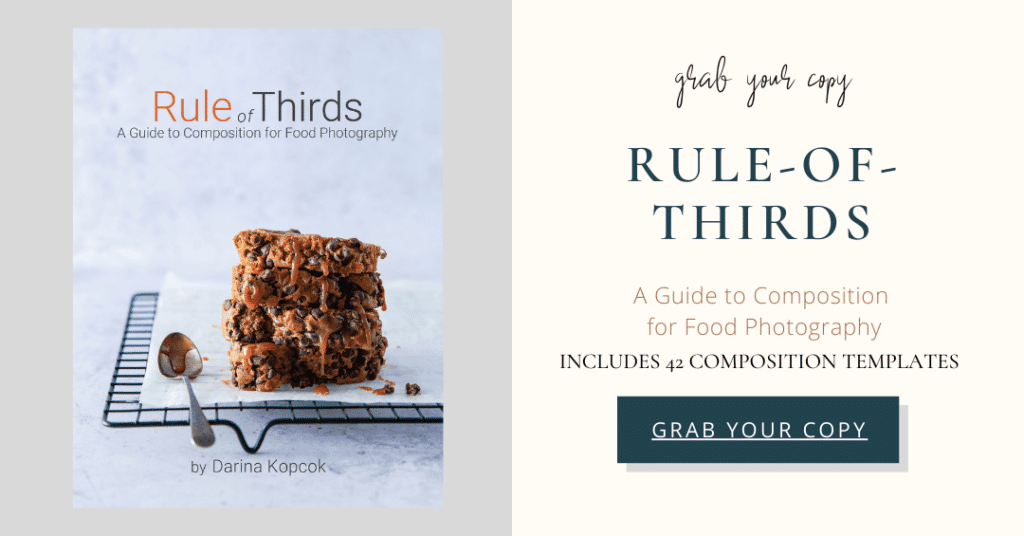Do you think of texture as an element of composition?
Texture is usually thought of in terms of the sense of touch, but it also has a visual component that has the power to elevate your food photography.
Although photography is primarily a visual medium, our senses don’t operate in isolation. Each of our senses informs the other as we experience the world around us.
By consciously considering texture when composing our food photos, we allow the viewer to experience our photos more directly. Texture can trigger the perception of cutting into a flaky apple pie or licking a creamy, drippy ice cream cone, so don’t forget about this key principle of composition.

How to Think About Texture
The important thing to remember when thinking about texture in your food photography is that everything has texture. If something is smooth, it still has texture—a smooth texture. Texture isn’t always obvious.
In the coffee scene in the image on the left below, there is actually a lot going on interns of texture that you may not realize because it’s so subtle.
There is the texture of the wood background, the slightly textured surface that the coffee and props sit on, the texture of the natural linen, the textured patina of the creamer and tray, and the natural stoneware of the cups. Finally, there is the more rugged texture of the rope attached to the cutting board.
The combination of these textures play together to give the scene a rustic atmosphere, and draws the viewer in the scene without being overwhelming.

You can find texture not only in your props, but also in your food subjects themselves. One of the most exciting aspects of shooting food is that it contains a variety of natural textures.
In the image on the right, the primary texture on the photo comes from the pie crust. By cutting into the pie and photographing it in an organic way, you have a sense of how the flaky pie crust and juicy, fruit filling would taste due to the emphasis on texture.
In the image on the right, the choice of a naturally creased linen tablecloth complements the pie because it adds another layer of texture; however, it’s subtle so it doesn’t overwhelm or compete with pie.
Texture in Backgrounds and Props
Considering texture starts when you’re choosing your background or the surface you’ll be shooting on. The textures should complement one another and should have different amounts of texture to be harmonious.
Although vinyl backgrounds can be attractive, a background with a bit of natural texture tends to look best. Backgrounds with a lot of texture can be suitable, too, but should be used carefully. It’s very easy for them to overpower the food, especially if the food already has a lot of natural texture.

In the image of the matcha lattes on the left, the surface has just enough texture to create interest. The matcha whisk also adds some really nice to texture to the shot.
In the image on the right, the primary texture is coming from the surface the citrus fruits are shot on, which works in this case because the fruit is relatively smooth.
Layering Texture
As you can see from the previous examples, layering texture is a key element in working with texture.
Layers add interest in food photography, but layering compositional elements that all have a lot of texture is overkill. You want to combine backgrounds, props, and food subjects with varying degrees of texture for the best result.
In the shot of donuts below, the background and props have a subtle texture, as do the donuts because they are sprinkled with sugar—which adds texture to an otherwise smooth food subject. The linen is smooth and adds a layer of interest.
A more textured napkin would have been too much.

Lighting for Texture
The quality and direction of light will enhance texture or diminish it. Typically you want to enhance the natural texture of your food. You can do this by adding contrast in post, but you can light for texture as well.
A good approach is side lighting or side backlighting which is relatively low. The light will wrap around the food and enhance the texture.
Also, direct hard light will also emphasize texture. This style of food photography is having its moment, but it doesn’t work with every food subject.
Sometimes the texture and contrast can look unattractive on certain subjects or dishes

To Sum Up
It’s easy to let texture take a back seat when composing your food photography, but it’s worth it to think about thinking about it more consciously when planning your shoots.
If you want to learn more about other important compositional elements in food photography, be sure to check out my eBook Rule-of-Thirds: A Guide to Composition for Food Photography.








2 Responses
Great primer on texture Darina. I subconsciously think about these things, but it’s good to take some time when planning and articulate the different textures you are trying to achieve. I always forget about the texture of linen.
I’m so glad you found the article useful, Cindy! I do love subtle texture like canvas and linen.